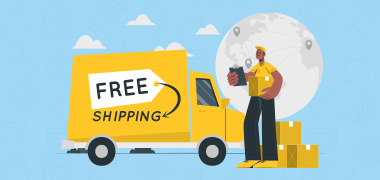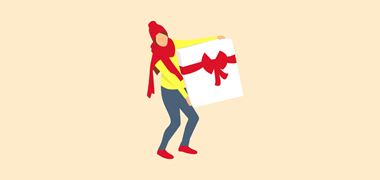No matter how easy it may seem, but conceptualizing a website from scratch requires much more than just designing ideas. Especially, if the task is to visualize an ecommerce site, it is nothing less than theorizing a Quantum Mechanics thesis. No extrapolation of the facts in this statement.
A corporate website, a blog or a service oriented website isn’t really as complex as an online store could be. The complexity lies in the varied elements for Product Pages. The challenge is in the typical nature of guided funnels you must incorporate to convert the site visitor into a buyer. The purpose of the latter is to have longer session time and that’s about it.
An Offline Footwear Store
Typically, when you enter a Footwear store, the display area would be amassed with kids section or female sections. Whereas the adult male section would be on the far side of the store. These placements are strategic, to induce a purchase which was not intentional at the time of entry for the store visitor.
Important Elements of a Web Store
A news & media site makes revenue through the ads, the purpose there is a prolonged session. As long as the site visitor remains on the site, their revenue meter continues running. However, in case of a web store, it is about real-time conversion – it is about whether the sale is made or not. Therefore, the Home Page, Product Pages and the category navigations require more attention than the latter.
-
Designing a Product Page:
The majority of the UX pundits spend their efforts in deploying just the right elements for the Product Pages and the Landing Pages. Which elements are to draw a click on the “Buy Now” button and what more can be shown to increase conversion is the key to designing these pages.
-
Micro Elements of the Pages:
Social sharing buttons are part of most themes. Their use case is quite different for an ecommerce store. And, it further becomes more complex when you visualize the responsive design for the entire site.
-
The BUY NOW Button:
You may prefer a sticky right hand bar for the Desktop design to feature the “Buy Now” section, along with the price and related information. However, for the responsive design, you would like to keep them at the base. The challenge on the HTML side to do this is to duplicate the code and add conditions to hide the sections for the given use case of device type.
And yet, we haven’t gone far enough to add business specific use cases on the Product Pages and the Landing Pages for the ecommerce site.
Theme based Designing vs Custom Design:
It is a given fact that to create custom website design, you would need more time and effort. The advantage here is that you would be in total control of what you want and further changes. But that is a narrow view and ignoring the fact that there could be ready themes to suit the needs of a robust ecommerce store. Yes, there will be small customizations still needed to personalize the theme for your business.
But, it saves time in designing the site. It saves time every time you need a new landing page or a microsite for marketing promotions. And, this method clearly ensures that you do not miss out what new technologies offer that you did not visualize as possible element.
The Ecommerce View:
Odoo hailed as a software solution from ecommerce industry. Their ERP solutions are already widely used across the industry. However, Odoo Themes are just the perfect solution for an ecommerce store. For starters, it takes the effort of creating a design from the scratch. And, they provide a perfect canvas to customize your vision.
Hard Coded Themes with Patches of JS and Ajax:
While hard coding and designing a website, even a season Project Manager’s knowledge is limited. Whereas the wireframes demand quite complex implementation. This scenario is not very uncommon for a mid-sized ecommerce company. In most cases while developing a custom theme, the developer overly uses the JS to achieve the desired functionality.
Now, there are mobile browsers Opera and UCBrowser who promises the load the pages faster than others. They achieve this functionality by ‘commenting’ the JS code. When your “Buy Now” section is loaded through the JS, you are not going to lose all these customers. For the users having to load the JS, the page load times are going to take significant beating if such JS is included in the body text. In the instance of loading them via Footer, you would not be able to provide the quality UX you aspired to.
Theme customization is the best answer to solve such puzzles. Themes developed by players such as Odoo and WooCommerce have extended features to integrate most of the known use cases for an online store. Their HTML coding is extremely rich and a number of complex features can be integrated without having to resort to patches of Ajax and JS.
WooCommerce vs Odoo
In the space of ecommerce, if you are looking for a beautiful looking website, there aren’t any better options than these two. They both promise a pleasing to the eyes website and dedication towards ecommerce industry. However, they both operate through a different genre within this space.
Odoo specializes in ERP solutions whereas WooCommerce remains a plugin rich extension (or plugin, call as you may like) of WordPress platform. As platform, we all loved WordPress for the ease, for the beauty and for their blog. Odoo has stepped a level up.
If you are building a store from scratch, Odoo Themes are an ideal fit for your requirement. For an existing store, you must analyze what are your critical business needs and which platform you are currently on.
To search for that perfect theme for your business or your client is the stepping stone to building a great website. Odoo Themes for any business and especially ecommerce industry are an ideal fit. It is easy to integrate, easier to customize and just as easy to map operational tools with a site built with Odoo software. Choosing the option to go with a Theme takes the effort away from complex coding and lets you focus on the UX and elements of the website for different set of pages.





